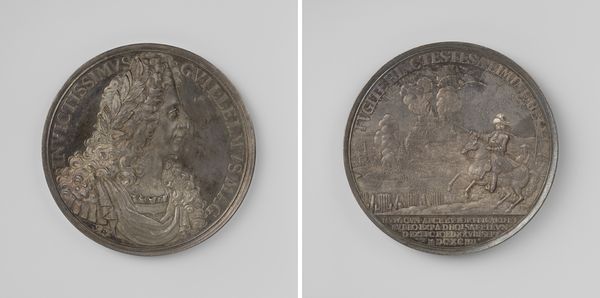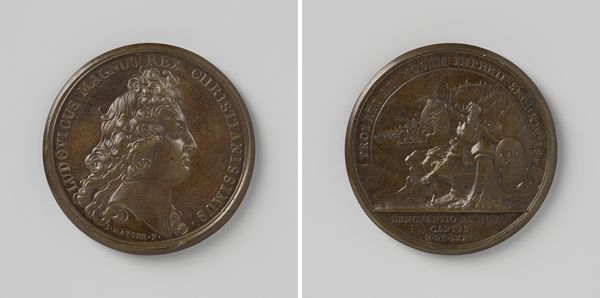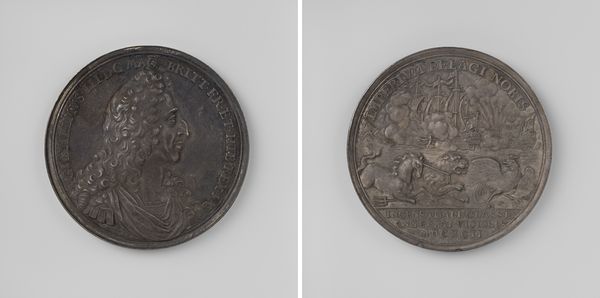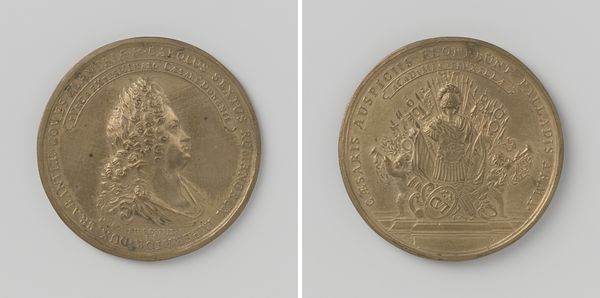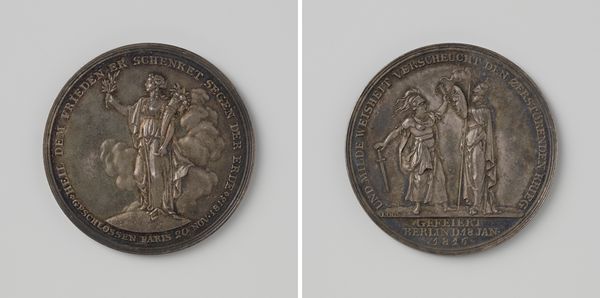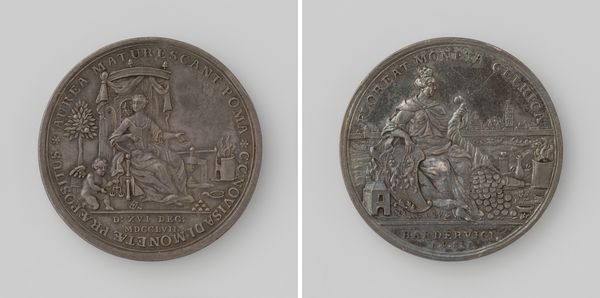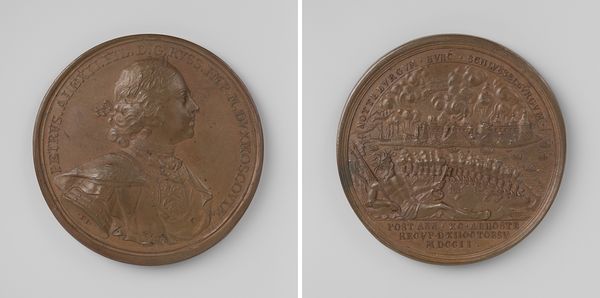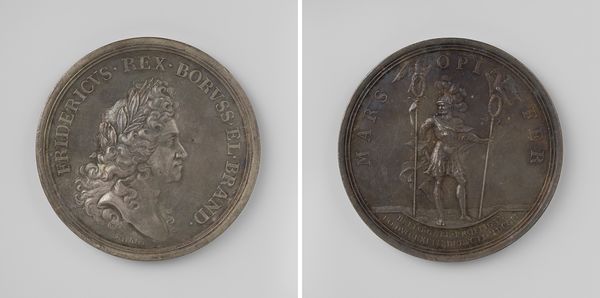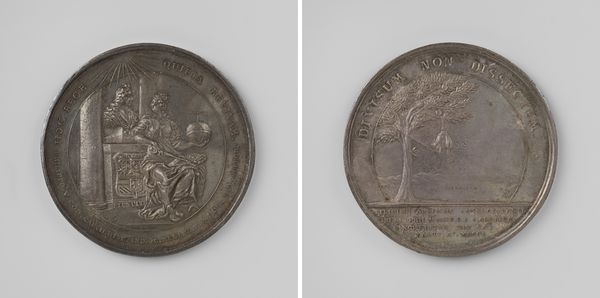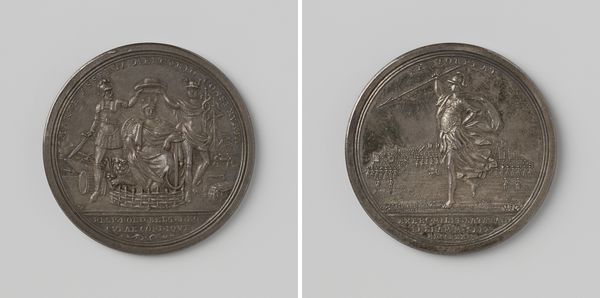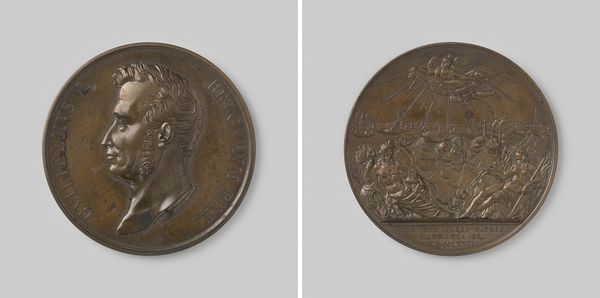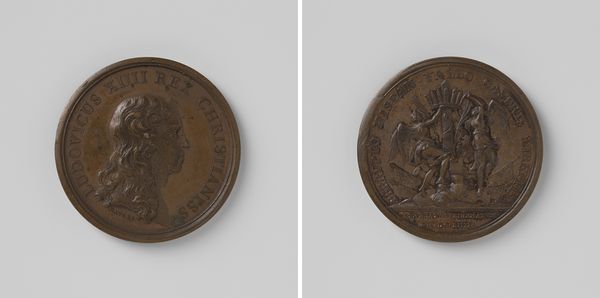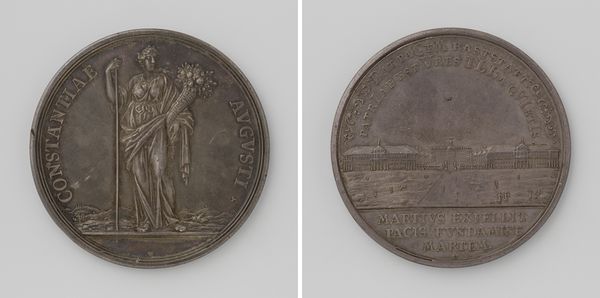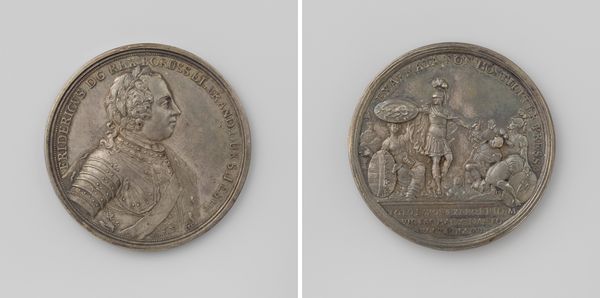
Slag bij Neerwinden of Landen, ter ere van Willem III, prins van Oranje-Nassau 1693
0:00
0:00
metal, relief, sculpture
#
portrait
#
medal
#
baroque
#
metal
#
relief
#
sculpture
#
history-painting
Dimensions: diameter 6 cm, weight 95.87 gr
Copyright: Rijks Museum: Open Domain
Editor: This piece is a medal, titled “The Battle of Neerwinden or Landen, in Honor of William III, Prince of Orange-Nassau,” created in 1693 by Jan Boskam. It's crafted from metal, and the detail in the relief is quite striking. I'm immediately drawn to the material quality of the piece, its almost austere feel despite being commemorative. What draws your attention most about it? Curator: I focus on the metal itself – its inherent value but also the labor involved in its transformation. Boskam’s process wasn’t just artistic, it was deeply tied to the economic and political powers of the day. Think about who commissioned this medal and why. What statement were they trying to make about William III's power, not just through imagery but also through the deliberate deployment of a precious material, transformed by skilled labor? Editor: That's a fascinating point. It highlights the power dynamics inherent in art production, doesn't it? Curator: Precisely. Medals like this were not just historical records. They were tools for shaping public perception, employing artistry as a means of solidifying power and disseminating carefully crafted narratives. Can you think about how the medal's availability, or lack thereof, to the general public affected its role as propaganda? Editor: It would only reach those already aligned, I would guess, the wealthier elite who have influence and power themselves. The average person wouldn't ever get to see it! That speaks volumes about who the medal was *really* for. This makes me wonder about the engraver's role. They’re shaping history for those in power. Curator: Excellent. And consider the skills required of the engraver – years of training, specific tools, and a controlled environment. Every step, from mining the metal to striking the final piece, reveals the socio-economic structure of the period. This changes the entire impression of the artwork to consider this historical production element. Editor: Absolutely. Thinking about the medal's materiality and production process opens up a whole new way to understanding it, and the historical context around it. Thanks for providing this framework. Curator: My pleasure. By analyzing the materiality, labor, and consumption surrounding the medal, we challenge traditional notions of art and gain deeper insight into its historical and social significance.
Comments
No comments
Be the first to comment and join the conversation on the ultimate creative platform.
